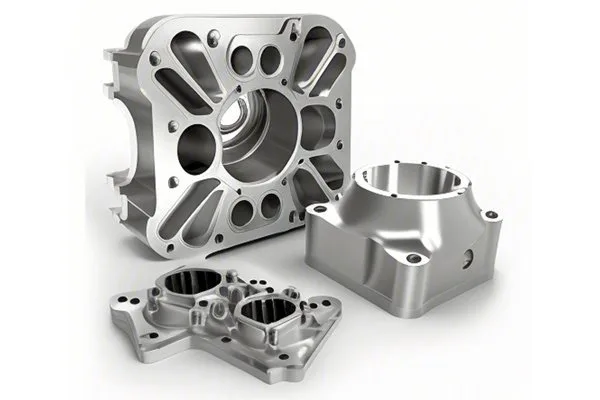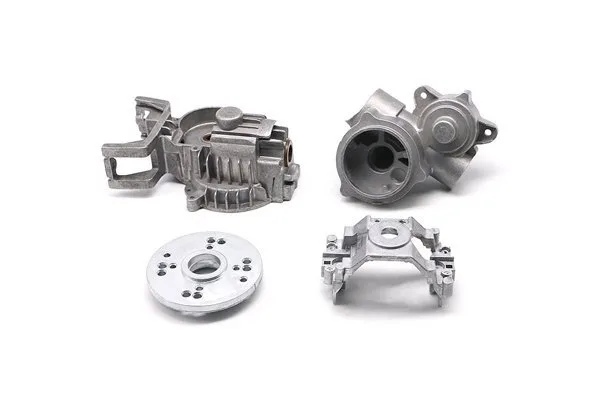Have you ever felt the thrill of a perfect finish? That smoothness that makes every inch of a machined part glisten? It’s like running your fingers along silk—satisfying and almost magical! The world of Computer Numerical Control (CNC) machining is all about that perfection. But let’s face it, achieving surface finishes of RA 0.8 and 0.6 isn’t just a walk in the park. It’s a journey filled with optimization, tweaks, and a sprinkle of know-how that can leave you feeling like a CNC wizard!
In this article, we’re going to dig deep into the intricacies of CNC machining and how you can enhance your machining paths for those enviable surface finishes. Are you ready to elevate your machining game to the next level? Let’s dive in!
Understanding Surface Finish: The Basics
Before we get our hands dirty with optimization techniques, let’s clarify what we mean by surface finishes—specifically RA 0.8 and RA 0.
A finish of RA 0.8 means that your part has a somewhat rugged texture, while RA 0.6 is a touch flatter, perfect for applications where smoothness is key. In many industries—like aerospace or automotive—these finishes are not just about aesthetics; they can affect performance, wear, and sealing capabilities. Who knew that such tiny measurements could make such a significant impact?
The Importance of Optimizing CNC Machining Paths
So why should you care about optimizing machining paths? Think of it as taking a scenic route versus a straight highway. While the highway may get you there faster, the scenic route allows you to soak in the view—and potentially discover hidden treasures along the way!
When it comes to CNC machining, path optimization is all about efficiency and quality. A well-optimized path means you’re reducing machining time, minimizing tool wear, and—most importantly—achieving that radiant finish you desire.
Now, let’s break down some practical steps to optimize those machining paths for the elusive RA finishes!
Step 1: Choose the Right Tooling
Imagine you’re going into battle; you wouldn’t want to go without your trusty sword and shield! In CNC machining, your tooling is your weaponry. The type and quality of your cutting tools can have monumental impacts on surface finishes.
The Right Tooling Choices Can Reduce Surface Roughness
By choosing the right rotary tool, you can make a world of difference in achieving a high-quality surface finish.
Step 2: Optimize Your Speeds and Feeds
Now that you have your trusty tools, it’s time to adjust your machining parameters. The speeds and feeds of your CNC program can make or break your surface finish.
Fine-tuning Your Speed and Feed
Ultimately, discovering the “sweet spot” for your specific machine, tool, and material requires experimentation. It’s all about the dance between speed and precision.
Step 3: Programming for Sequential Machining
Let’s talk about the machining paths—how you program these can lead to vast differences in surface finish. If you think of a painter layering colors on a canvas, similarly, each pass you take with your CNC machine adds a layer to your part.
Why Sequential Machining?
Sometimes it’s beneficial to take multiple passes to achieve that desired finish. Here are a few things to consider:
Step 4: Use of Adaptive Machining Strategies
Now, let’s explore the wonderful world of adaptive machining! This is where you can fuse technology with human ingenuity to enhance your results.
What’s Adaptive Machining?
Adaptive machining takes into account the real-time condition of the cutting tool, the material removal process, and even vibrations during machining. It’s like having a personal trainer who ensures you maintain the correct form while lifting weights!
By constantly adapting to changes—such as wear or unexpected material behavior—you can achieve a better surface finish while potentially extending tool life.
Stepping Up Your Game: Advanced Techniques
With the basics down, let’s kick it up a notch! Here are some advanced techniques to push for that RA 0.8 and 0.6 finish.
Utilize High-Pressure Coolant
Using high-pressure coolant can reduce friction and heat generated during the machining process. Picture a cool breeze on a hot day—it’s refreshing, right? Well, high-pressure coolant acts similarly, keeping both your tool and workpiece cool during machining.
Implement Vibration Dampening
Have you ever been in a situation where vibrations ruined the quality of a song? In the case of CNC machining, vibrations can create a rough surface finish. Implementing vibration dampening techniques can help mitigate these issues.
Use of Simulation Software
Before you even cut a piece of material, consider using simulation software. It’s like a dress rehearsal before the main event! Simulations let you visualize machining paths, making it easier to optimize for efficiency and quality.
Monitor and Measure: Ensuring Quality Control
No need for guesswork here! Continuous monitoring and measuring of your machining processes lead to the highest quality outcomes.
Gage Your Roughness
Use a surface roughness tester after machining to measure your RA values. Regularly track fluctuations to identify trends—it’s akin to keep tracking your workout progress; soon, you’ll see how far you’ve come!
Adjust and Adapt
Be ready to adjust your parameters based on data collected. It’s all about refining your approach until you feel that silky-smooth finish beneath your fingertips.
Conclusion: The CNC Machining Journey
Achieving surface finishes of RA 0.8 and 0.6 in CNC machining is like a quest—it requires patience, precision, and the proper strategies along the way. From choosing the right tooling to utilizing advanced machining strategies, every step is crucial to reaching that desired outcome.
Embrace this journey, and remember: CNC machining doesn’t just end at producing a part; it’s also about creating something beautiful, functional, and enduring. With practice and keen observation, you’ll become the master of your craft, producing parts that shine like polished treasures.
So, are you ready to take your CNC machining skills to the next level? Dive into these strategies, experiment, and don’t forget to enjoy the process! After all, isn’t that what makes crafting such a rewarding experience?






